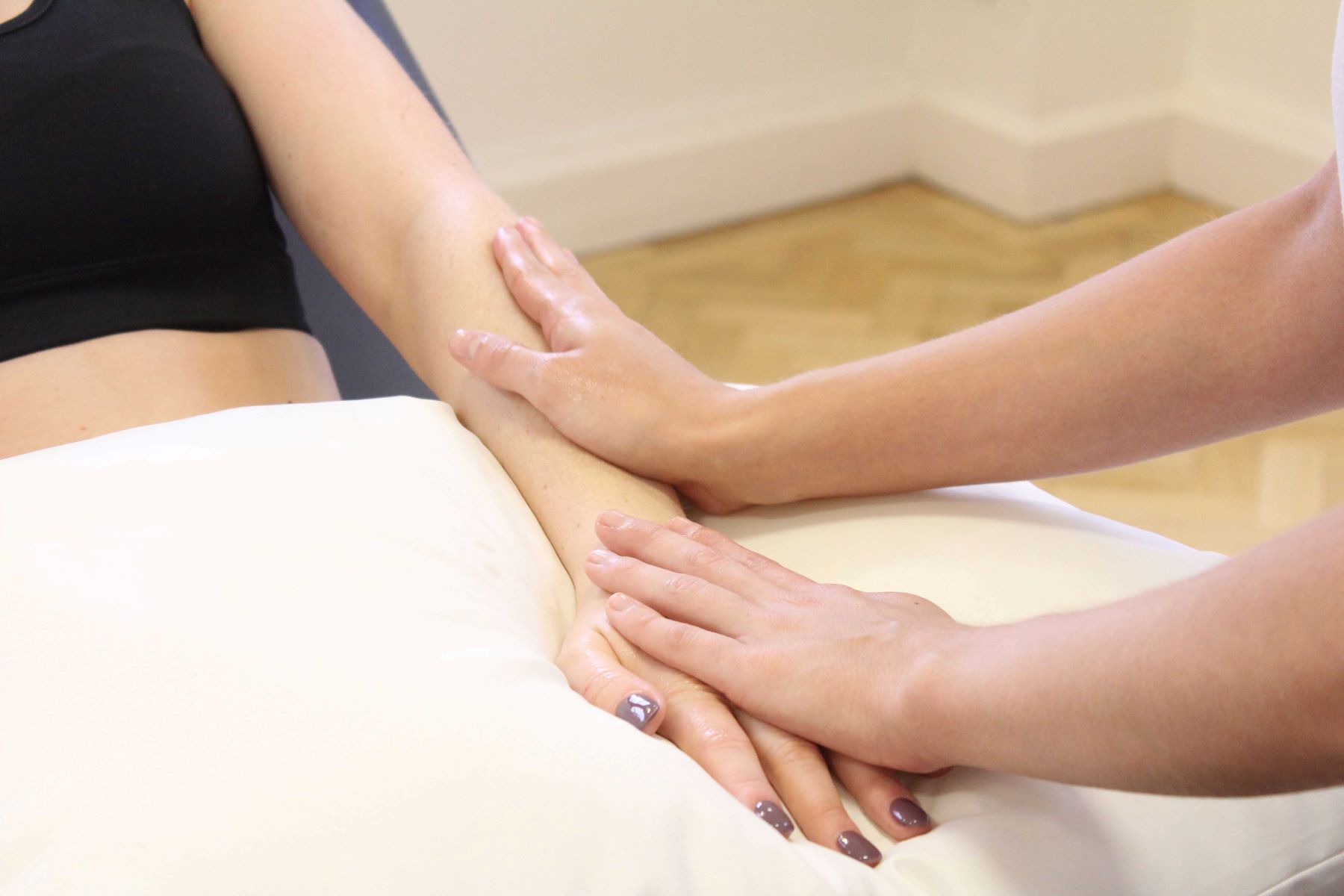
Manual Lymphatic Drainage (MLD) is a specialized massage technique designed to stimulate the flow of lymph fluid, which helps remove toxins and waste from the body. Developed by Dr. Emil Vodder in the 1930s, this therapy is often used to reduce swelling, improve circulation, and enhance the immune system. MLD can be particularly beneficial for individuals recovering from surgery, those with lymphedema, or anyone looking to boost their overall health. But what exactly makes MLD so effective? In this post, we'll dive into 45 fascinating facts about Manual Lymphatic Drainage, shedding light on its history, benefits, techniques, and much more. Get ready to discover how this gentle yet powerful therapy can make a significant difference in your well-being!
Key Takeaways:
- Manual Lymphatic Drainage (MLD) is a gentle massage technique that helps remove toxins, reduce swelling, and improve overall health by stimulating the lymphatic system. It can benefit people with various medical conditions.
- MLD involves light, rhythmic strokes that mimic the body's natural lymphatic contractions. It can be used to manage conditions like lymphedema, chronic venous insufficiency, and fibromyalgia, and is often part of a holistic wellness approach.
What is Manual Lymphatic Drainage?
Manual Lymphatic Drainage (MLD) is a type of gentle massage aimed at stimulating the lymphatic system. This helps in removing waste and toxins from the body. Here are some fascinating facts about MLD.
- Developed by Dr. Emil Vodder in the 1930s, MLD was initially used to treat chronic sinusitis and other immune disorders.
- MLD involves light, rhythmic strokes that mimic the natural contractions of the lymphatic system.
- The technique is often used to reduce swelling and improve circulation.
- MLD can be beneficial for people with lymphedema, a condition where lymph fluid builds up in tissues causing swelling.
- This massage is also used to enhance the immune system by promoting the flow of lymph, which contains white blood cells.
Benefits of Manual Lymphatic Drainage
MLD offers numerous health benefits, making it a popular choice for various treatments. Here are some key advantages.
- MLD helps in detoxifying the body by removing metabolic waste and toxins.
- It can reduce swelling and inflammation, especially after surgery or injury.
- The technique promotes relaxation and reduces stress by activating the parasympathetic nervous system.
- MLD can improve skin health by increasing blood flow and oxygen to the skin.
- It aids in reducing cellulite by breaking down fatty deposits and improving lymphatic flow.
How Manual Lymphatic Drainage Works
Understanding how MLD works can help appreciate its effectiveness. Here are some insights into its mechanism.
- MLD stimulates the lymphatic vessels to contract more frequently, enhancing lymph flow.
- The gentle pressure used in MLD helps to move lymph fluid towards the lymph nodes, where it is filtered.
- MLD can help in re-routing lymph fluid around blocked areas in the lymphatic system.
- The technique can also stimulate the production of lymphocytes, which are crucial for immune function.
- MLD can improve the removal of excess proteins from tissues, reducing swelling and promoting healing.
Conditions Treated by Manual Lymphatic Drainage
MLD is versatile and can be used to treat various medical conditions. Here are some examples.
- Lymphedema, often caused by cancer treatments, can be effectively managed with MLD.
- Chronic venous insufficiency, where veins struggle to send blood back to the heart, can benefit from MLD.
- MLD is used to alleviate symptoms of fibromyalgia, a condition characterized by widespread pain.
- It can help in managing rheumatoid arthritis by reducing joint inflammation and pain.
- MLD is also used in treating chronic fatigue syndrome by boosting the immune system and reducing toxins.
Techniques Used in Manual Lymphatic Drainage
Different techniques are employed in MLD to achieve optimal results. Here are some common methods.
- Stationary circles involve circular hand movements to stimulate lymphatic flow.
- Pump technique uses a pumping motion to move lymph fluid towards the lymph nodes.
- Rotary technique involves rotating the skin to stretch the lymphatic vessels.
- Scoop technique uses a scooping motion to move lymph fluid.
- Combination of these techniques can be tailored to individual needs for maximum effectiveness.
Training and Certification for Manual Lymphatic Drainage
Proper training is essential for practitioners to perform MLD effectively. Here are some facts about training and certification.
- MLD practitioners often undergo specialized training programs to learn the techniques.
- Certification is usually provided by recognized institutions like the Dr. Vodder School.
- Training programs include both theoretical and practical components.
- Practitioners must understand the anatomy and physiology of the lymphatic system.
- Continuing education is important to stay updated with the latest techniques and research.
Myths and Misconceptions about Manual Lymphatic Drainage
There are several myths surrounding MLD. Here are some common misconceptions and the truth behind them.
- Myth: MLD is painful. Fact: MLD is a gentle, non-invasive technique.
- Myth: MLD can cure diseases. Fact: MLD supports the body's natural healing process but is not a cure.
- Myth: Anyone can perform MLD. Fact: Proper training and certification are required to perform MLD effectively.
- Myth: MLD results are immediate. Fact: MLD may take several sessions to show noticeable results.
- Myth: MLD is only for people with medical conditions. Fact: MLD can benefit anyone looking to improve their overall health.
Precautions and Contraindications for Manual Lymphatic Drainage
While MLD is generally safe, certain precautions and contraindications must be considered. Here are some important points.
- MLD should not be performed on individuals with acute infections.
- People with congestive heart failure should avoid MLD.
- MLD is not recommended for those with blood clots or deep vein thrombosis.
- Individuals with untreated cancer should consult their doctor before undergoing MLD.
- Pregnant women should seek medical advice before receiving MLD.
Interesting Facts about Manual Lymphatic Drainage
Here are some additional interesting facts about MLD that you might not know.
- MLD can be used as part of a detox program to enhance overall health.
- Athletes use MLD to speed up recovery and reduce muscle soreness.
- MLD can improve the appearance of scars by promoting tissue healing.
- The technique is often used in conjunction with other therapies like compression garments.
- MLD can be a part of a holistic approach to wellness, including diet and exercise.
Final Thoughts on Manual Lymphatic Drainage
Manual Lymphatic Drainage (MLD) offers numerous benefits, from reducing swelling to boosting the immune system. This gentle massage technique can help improve overall health and well-being. It's not just for those with medical conditions; anyone can benefit from MLD. Regular sessions can enhance your body's natural detoxification process, leaving you feeling rejuvenated.
Remember, always consult a trained professional for MLD to ensure safety and effectiveness. Whether you're dealing with lymphedema, post-surgery recovery, or just looking to improve your health, MLD might be worth considering.
Understanding these 45 facts about MLD can help you make informed decisions about incorporating this therapy into your wellness routine. Stay curious, stay informed, and take steps towards a healthier you.
Frequently Asked Questions
Was this page helpful?
Our commitment to delivering trustworthy and engaging content is at the heart of what we do. Each fact on our site is contributed by real users like you, bringing a wealth of diverse insights and information. To ensure the highest standards of accuracy and reliability, our dedicated editors meticulously review each submission. This process guarantees that the facts we share are not only fascinating but also credible. Trust in our commitment to quality and authenticity as you explore and learn with us.


